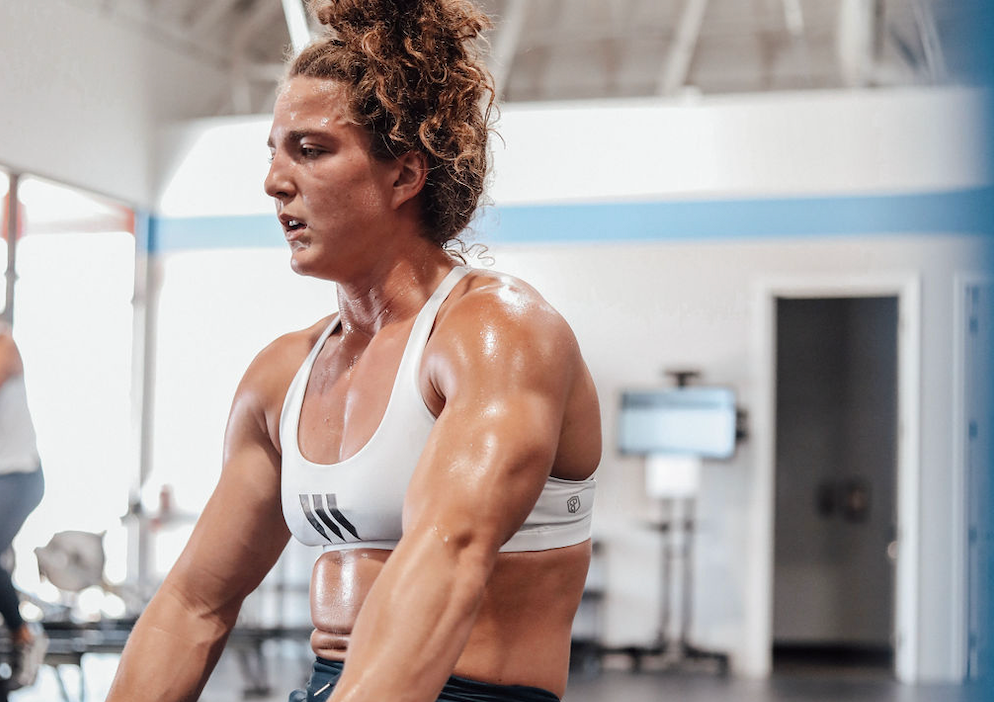You’ve probably heard it before: “I’m an ectomorph, so I can’t gain muscle,” or “She’s a mesomorph, so she builds muscle easily.” These labels—ectomorph, mesomorph, and endomorph—come from the somatotype system, a body-typing model developed nearly a century ago. But in today’s era of evidence-based training and nutrition, it’s fair to ask: Are somatotypes still relevant?
In this article, we’ll break down:
-
What somatotypes are and where they came from
-
Whether they have any scientific credibility
-
How body typing compares to modern sports science
-
What actually determines your ability to build muscle, lose fat, or perform athletically
We’ll also offer practical advice for training and nutrition—based on your physiology, not a label.
What Are Somatotypes?
The concept of somatotypes dates back to the 1940s, when psychologist William Sheldon introduced a theory that categorized human bodies into three basic types: ectomorph, mesomorph, and endomorph. While originally tied to personality psychology, the physical classification stuck—especially in the world of fitness and bodybuilding.
-
An ectomorph is naturally lean with a fast metabolism, narrow shoulders, and struggles to gain both muscle and fat.
-
A mesomorph is naturally muscular and athletic, builds strength easily, and tends to respond well to resistance training.
-
An endomorph is typically rounder or softer, stores fat more easily, and has a slower metabolism—but may also gain muscle faster than other types.
You can find a full breakdown of all three in this guide to body types, including how they’ve influenced fitness programming for decades.
While these categories have long been used to tailor training and diet strategies, the question remains—how useful are they, really?\
Do Somatotypes Have Scientific Validity?
In short: not really—not anymore.
While somatotypes once offered a simplistic way to describe physical appearance, modern exercise science has shown that these categories are too broad, too static, and not grounded in physiology. Most people don’t fit neatly into just one category. Instead, we exist on a spectrum—and that spectrum changes over time.
“Somatotype classification lacks predictive power and fails to account for training status, nutrition, and genetic variation in muscle fiber composition and hormonal response.”
— Carter & Heath, Journal of Sports Medicine and Physical Fitness
Moreover, your body type can evolve with resistance training, diet, and lifestyle changes. A lean ectomorph can build significant muscle mass. A softer endomorph can lose fat and improve insulin sensitivity. A mesomorph can plateau or regress without proper programming. None of these labels account for biological adaptability.
If you’ve ever said, “I’m just not built for muscle”—there’s a good chance you’re underestimating what smart training and recovery can do. That’s why we now look to training age, muscle fiber dominance, metabolic response, and hormonal profiles, not outdated categories.
For a better framework, see our article on how to train based on your body type, where we discuss actionable strategies rooted in progressive overload, macronutrient timing, and training adaptation—not somatotype theory.
What Actually Influences Muscle Growth and Fat Loss?
While somatotypes offer surface-level generalizations, true body transformation is driven by a complex interaction of physiological, behavioral, and environmental factors. Here’s what actually matters:
1. Training History and Experience Level
Your training age (how long you’ve been lifting with structure) affects how quickly you adapt. Beginners respond rapidly to almost any stimulus, while advanced lifters require more precise programming.
2. Nutrition and Macronutrient Intake
Muscle isn’t built in the gym—it’s built through consistent protein intake, calorie control, and nutrient timing. An ectomorph won’t grow without a surplus. An endomorph won’t lean out without managing insulin response. That’s not body type—that’s biology.
Work 1:1 with a coach at The Swole Kitchen to build a personalized meal plan based on your metabolism, training, and goals.
3. Hormonal Profile and Sleep
Testosterone, growth hormone, insulin sensitivity, and cortisol all affect how you respond to training. Poor sleep, chronic stress, or undereating can blunt muscle growth or increase fat storage—regardless of your “type.”
Support recovery and hormonal balance with ZMT, Swolverine’s all-in-one sleep optimizer formulated with zinc, magnesium, and herbal adaptogens.
4. Muscle Fiber Composition
Some individuals are naturally more fast-twitch dominant, which favors explosive lifting and hypertrophy. Others may have more endurance-oriented fibers. Genetics matter—but smart training maximizes your individual strengths.
5. Consistency and Effort
At the end of the day, no label overrides effort. Progressive overload, consistent training, adequate recovery, and nutritional discipline matter far more than the shape of your skeleton.
Should You Still Use Body Types to Guide Your Training?
You can—but only with caution.
While somatotypes may offer a starting point for thinking about your natural tendencies (like fast metabolism or fat storage patterns), they should never become a limitation or excuse. The real danger of body typing is when it becomes self-fulfilling:
“I’m an ectomorph, so I’ll never gain size.”
“I’m an endomorph, so I can’t get lean.”
“I’m a mesomorph—I don’t need to work as hard.”
Instead, use your perceived body type as a snapshot, not a diagnosis. If you’re naturally lean, that might mean you need more calories and a lower training volume to recover. If you gain weight easily, you might benefit from more frequent movement and insulin-sensitizing strategies.
For a smart, adaptable training framework—based on individual goals, not generalizations—read our guide on how to train based on your body type. It breaks down how to adjust volume, frequency, and nutrition for different physiological starting points.
At the end of the day, your results are determined by what you do, not by what you're called.
Can You Change Your Body Type?
Absolutely—and that’s exactly the point. Your “body type” isn’t a fixed trait. It’s a reflection of your current habits, environment, hormonal state, and training history.
An ectomorph who trains progressively, eats in a calorie surplus, and supports recovery can absolutely build size and evolve into a more mesomorphic physique. Likewise, an endomorph who trains smart and improves metabolic health can develop lean muscle and athletic definition.
“Body composition is dynamic. Resistance training and proper nutrition consistently alter lean mass and fat mass, regardless of starting somatotype.”
— Krieger et al., Journal of the International Society of Sports Nutrition
The takeaway? What you do over time has more impact than what category you fall into today. Your body will adapt to the demands you consistently place on it.
How Somatotypes Get Misused in Fitness Culture
While originally intended as observational tools, somatotypes have often been misapplied as excuses, limitations, or gimmicky selling points.
Common Myths You’ve Probably Heard:
-
“Ectomorphs shouldn’t train more than 3x/week.”
-
“Endomorphs should avoid carbs.”
-
“Mesomorphs don’t need supplements or cardio.”
These claims are not only inaccurate—they’re counterproductive. They ignore individual response, biofeedback, goals, and lifestyle. Real results come from adapting to feedback, tracking data, and applying science—not blanket labels.
Instead of training by stereotype, learn how to train based on your physiology and goals—not your bone structure.
How Smart Coaches Use Body-Type Observations (Without the Labels)
Experienced coaches may notice things like:
-
Where you store fat (visceral vs. subcutaneous)
-
How quickly you recover between sessions
-
Your energy availability and performance across the week
-
How easily you gain or lose weight with diet changes
These observations inform how a program is adjusted, but never lock a client into one type of training. At The Swole Kitchen, we look at your biofeedback, lab markers (if available), goal timeline, and habits—not your frame size.
We may train someone with “ectomorphic” tendencies with a lower-volume, higher-rest muscle-building split, while someone with endomorphic traits might thrive on higher-frequency, lower-carb metabolic sessions. It’s not about the label—it’s about what your body responds to now.
Conclusion
While the somatotype system—ectomorph, mesomorph, endomorph—may offer a loose framework for understanding body shape, it’s no longer considered a reliable or actionable model in sports science or physique development. Your body is dynamic, adaptable, and far more complex than any three-category system.
Instead of labeling yourself, focus on:
-
Training with purpose and progressive overload
-
Eating to support your goal (muscle gain, fat loss, performance)
-
Tracking progress and adjusting intelligently
-
Recovering effectively through sleep, supplements, and stress management
Somatotypes may describe your starting point—but they don’t define your potential.
If you’re ready to ditch outdated fitness myths and build a plan that works with your physiology—not against it—apply for individualized coaching at The Swole Kitchen.
Frequently Asked Questions (FAQ)
Are somatotypes scientifically accurate?
No. While they can loosely describe physical trends, somatotypes are outdated and lack predictive power. They don’t account for your lifestyle, hormonal status, or training experience.
Can I change my body type with training and diet?
Yes. Your body composition is highly responsive to resistance training, calorie intake, sleep, and supplementation. Most people evolve across the spectrum with time.
Is it ever useful to know your body type?
It can be a starting observation, but it should never guide your entire program. Focus on what your body needs right now, not what a chart says.
What’s a better alternative to body typing?
Use measurable data:
-
Training performance
-
Recovery metrics
-
Sleep quality
-
Strength-to-weight ratio
-
Waist and lean mass changes
All of which are trackable and adjustable.
How do I know if I’m training the right way for my body?
If you’re progressing in strength, performance, and recovery—and your physique is evolving—you’re on the right path. If not, it may be time to restructure your plan with a coach.







